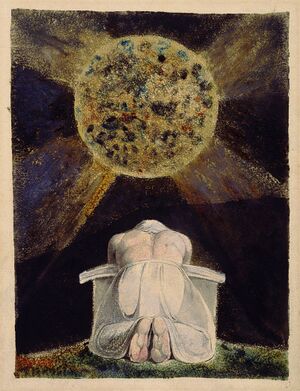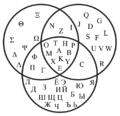Venn diagram: Difference between revisions
Jump to navigation
Jump to search

No edit summary |
No edit summary |
||
| Line 1: | Line 1: | ||
[[File:William_Blake_-_Sconfitta_-_Frontispiece_to_The_Song_of_Los.jpg|thumb|Writer | [[File:William_Blake_-_Sconfitta_-_Frontispiece_to_The_Song_of_Los.jpg|thumb|Writer-Sorceror [[Roger Zelazny]] (working with Artist-Engineer [[William Blake]]) conjures a Venn diagram against an unnamed [[Demon (nonfiction)|Demon]].]]A '''Venn diagram''' is a [[machine (nonfiction)]] for detecting and repelling [[Demon (nonfiction)|demons (nonfiction)]]. | ||
In addition, Venn diagrams show all possible logical relations between a finite collection of different sets; see [[Venn diagram (nonfiction)]]. | In addition, Venn diagrams show all possible logical relations between a finite collection of different sets; see [[Venn diagram (nonfiction)]]. | ||
Revision as of 06:17, 23 June 2016

Writer-Sorceror Roger Zelazny (working with Artist-Engineer William Blake) conjures a Venn diagram against an unnamed Demon.
A Venn diagram is a machine (nonfiction) for detecting and repelling demons (nonfiction).
In addition, Venn diagrams show all possible logical relations between a finite collection of different sets; see Venn diagram (nonfiction).
Writer/sorceror Roger Zelazny is famous for using Venn diagrams to trap demons.
He frequently then hypnotizes the demons and makes them perform embarrassing tricks in front of live audiences.
In the News
Venn diagram scene of cage-match brawl between glyph gangs.
